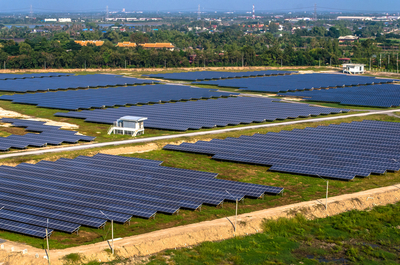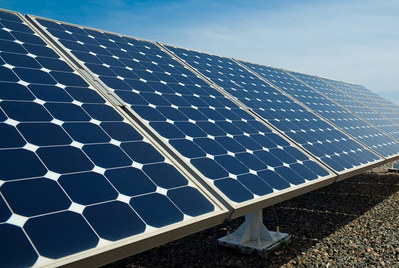Technology
Types of Solar Power Systems
Sunlight is the largest, cleanest, least expensive resource for energy on Earth. The Earth's entire energy needs could easily be met by harvesting a very small percentage of the sunlight that hits our planet. It is the objective of the solar power industry to find ways to harvest that energy and deliver it in a usable form to end users. Currently there are three principal means to gather sunlight and convert it into usable power.
- Photovoltaic Systems
- Concentrating Collectors
- Solar Thermal Collectors
Photovoltaic System

Photovoltaic systems use photovoltaic (PV) devices to convert sunlight into electricity. PV devices are small cells made of special materials which, upon absorbing sunlight at the right wavelength, cause electrons within the cell to separate from their parent atoms. These electrons are then capable of creating a small electrical current. When several photovoltaic cells are connected properly, they can together create electrical currents of sufficient magnitude to be useful.
The most significant advantages of using PV devices to generate electricity are:
- Very little, if any, environmental damage
- No fuel expenses
- No greenhouse gas emissions
- Simplicity and speed of installation of PV panels
- Limitless source of raw energy (sunlight)
- Steadily declining cost of PV devices
Large scale application of PV technologies, designed to generate electricity for large numbers of end users, usually take the form of extensive arrays of solar panels extending across many acres of land. The world's largest PV solar farm is the Tengger Desert Solar Park in Zhongwei, Ningxia, China.
Concentrating Collectors

Crescent Dunes, Tonopah, Nevada
(click image to enlarge)
Concentrating Collectors use mirrors to gather sunlight and direct it to concentrating devices that produce high-temperature heat, which is then used to generate electricity. There are three main types of concentrating solar collectors:
- Linear concentration systems
- Solar power towers
- Solar dish/engine systems
Linear Concentration Systems use either of two methods to collect sunlight and direct it toward receiver mechanisms, (a) parabolic mirror troughs and (b) linear Fresnel reflectors. The parabolic mirror troughs use curved mirrors to focus the sunlight on a liquid-filled tube running along the focus line of the parabolic mirror. The linear Fresnel reflectors are similar to the parabolic system, except that a special design of the mirrors allow greater focus and concentration of reflected sunlight on the receiver tubing.
Solar power towers use large numbers of mirrors to reflect sunlight to a single receiver on top of a tower. The receiver converts the intense sunlight to heat, which is used to generate electricity.
Solar dish/engine systems have a large array of many mirrors arranged in the form of a massive dish. Sunlight reflects off the mirrors which point to a central receiver at the focal point of the dish. The dish then collects the heat and transfers it to a generator which produces electricity.
Solar Thermal Collectors

(click image to enlarge)
Solar thermal collectors are used to heat water and air. There are two types of solar thermal collectors - passive and active.
Passive solar heating is simply allowing sunlight to pass through a window, hitting special walls that are designed to absorb the heat of the sunlight. Shades over the windows are used to block the sunlight during the summer.
Active solar heating involves the use of a collector of the sunlight. A fluid carries the heat to a room or to a heat storage system. The collector can be either non-concentrating, which is used when only temperatures lower than 200 degrees F are enough. If higher temperatures are required, then concentrating collectors are used.